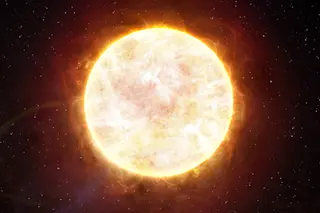[On January 4, 2012, I started a new features: BAFacts, where I write an astronomy/space fact that is short enough to be tweeted. A lot of them reference older posts, but some of the facts need a little mathematical explanation. When that happens I'll write a post like this one that does the math so you can see the numbers for yourself. Why? Because MATH!]
Today's BAFact: From Pluto, the Sun is fainter than it is from Earth, but still can be 450x brighter than the full Moon. I remember reading a science fiction story many years ago which took place on Pluto. The author described the Sun as being so faint that it looked like just another bright star (too bad I don't remember the name of the story anymore). I was thinking about that again recently, and wondered just how bright the Sun does look from Pluto. This ...













